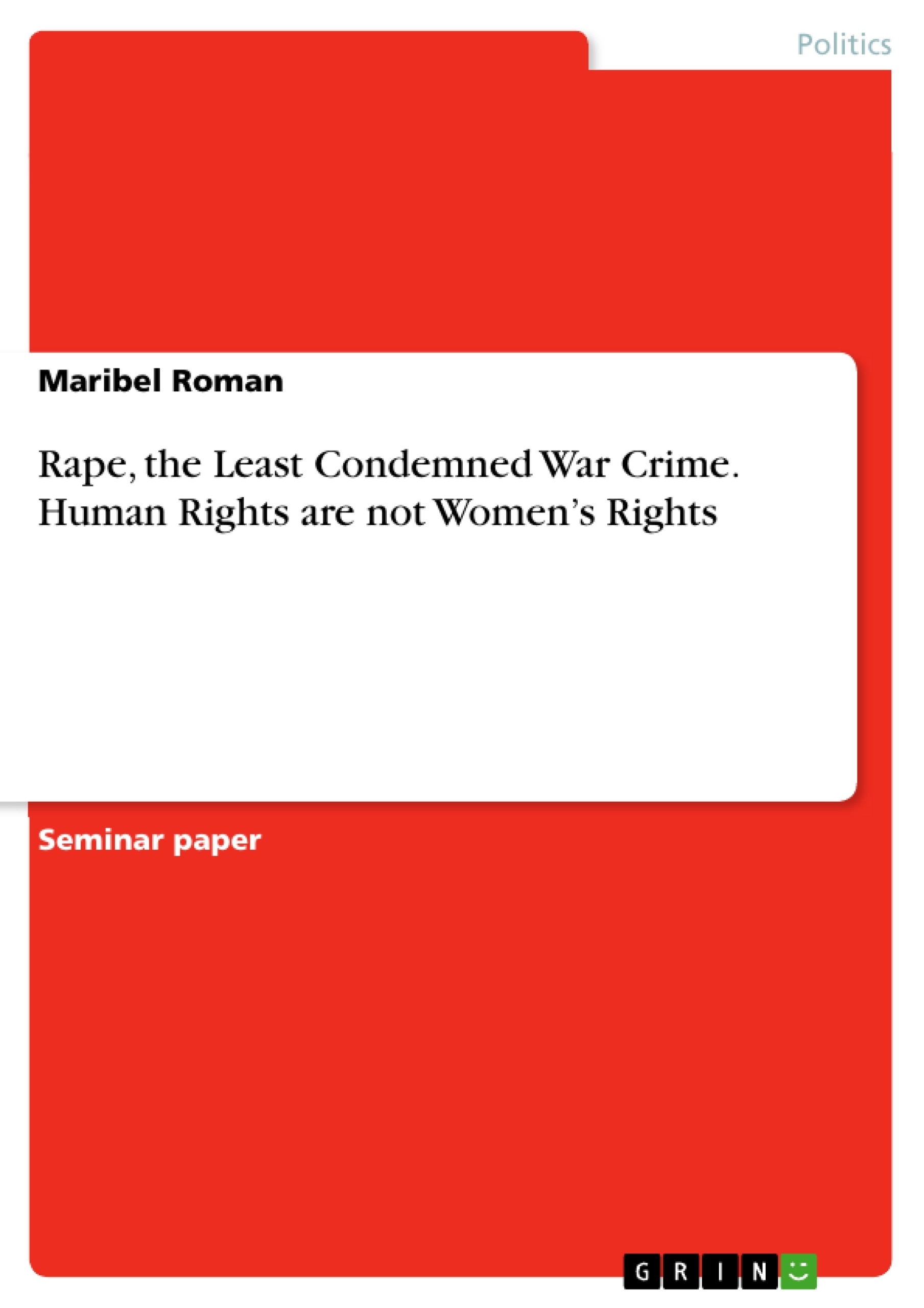Rape has long been used as an instrument of war with relative impunity. The scale and horror of sexual violence against women and girls during times of conflict have gained it the recognition as serious crimes. Therefore, rape has become subject of national and international jurisprudence.
The continued determination of women’s rights groups and other Non-Governmental Organizations (NGOs) have helped raise awareness and ensure protection from these horrific criminal acts. They effectively used international humanitarian law and put on trial some of the accusers. Rape and sexual violence against women during times of war has gained recognition as war crimes and crimes against humanity. However, treating rape as a war crime and prosecuting the accusers for crimes against humanity has not prevented these crimes from reoccurring. In order to prevent this horrific crime from occurring, war rape must be consider a violation of the most fundamental rights, human rights.
Human rights do not apply to women. The language of human rights creates the illusion that everyone is equal before the law, regardless of gender. It disguises the reality of unequal gender power relations that affects all societies. When addressing the crime of rape during times of conflict, the concept of equality means much more than treating all persons in the same way. Human rights activists need to address sexual violence against women as an infringement of human rights, but the only way to do that is to challenge the belief that human rights provisions adequately address women’s rights. Activists must advocate to expand human rights laws and build human rights standards to include gender specific crimes. Rape and all forms of sexual violence against women need to be clearly stated as a human rights provision.
The acceptance of violence against women during times of conflict, as an abuse of human rights will provide activists with access to the ruling by international law. Because it would be universally held to have political weight, it will provide a useful set of tools. Using these tools, women can demand the State’s and international protection, prevention against this horrific crimes and retribution against the perpetrators of abuse. To advocate human rights is to demand that the human dignity of all people be respected. Therefore, no women should be subject to any form of torture, degrading treatment of inhuman treatment.
Inhaltsverzeichnis (Table of Contents)
- Abstract
- Introduction
Zielsetzung und Themenschwerpunkte (Objectives and Key Themes)
This paper aims to challenge the perception of rape as solely a women's rights issue and argue for its recognition as a fundamental human rights violation. It seeks to highlight the inadequacy of existing human rights frameworks in addressing gender-specific crimes like rape and calls for the expansion of human rights laws to explicitly include such offenses.
- The ongoing problem of sexual violence against women during times of conflict
- The need to recognize rape as a violation of human rights, not just women's rights
- The inadequacy of existing human rights frameworks in addressing gender-specific crimes
- The importance of advocating for the expansion of human rights laws to include gender-specific crimes
- The need to challenge the belief that human rights provisions adequately address women's rights
Zusammenfassung der Kapitel (Chapter Summaries)
- The abstract highlights the continued prevalence of rape as a weapon of war despite its legal recognition as a war crime and crime against humanity. It emphasizes the need to view rape as a human rights violation to effectively prevent and address this crime.
- The introduction delves into the historical context of wartime sexual violence against women and its inadequate recognition as a war crime. It discusses the complexities of gender and ethnicity in understanding wartime sexual violence and the importance of feminist scholarship and international law in addressing these issues.
Schlüsselwörter (Keywords)
This paper focuses on rape as a war crime, human rights, gender-specific crimes, women's rights, international law, sexual violence, and the need to challenge the existing framework of human rights to adequately address gender-based abuses.
- Citation du texte
- Maribel Roman (Auteur), 2003, Rape, the Least Condemned War Crime. Human Rights are not Women’s Rights, Munich, GRIN Verlag, https://www.grin.com/document/461960



